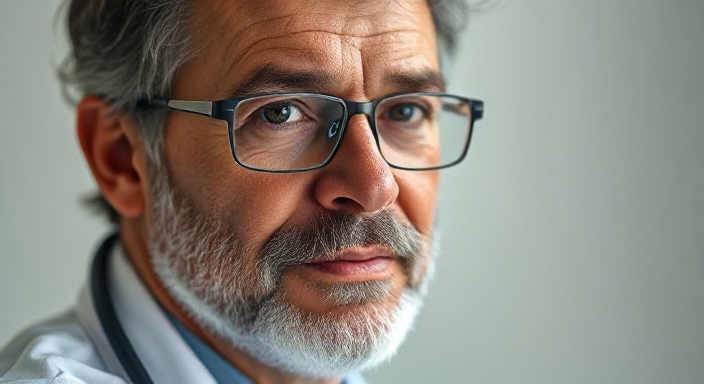

When Science Meets Experience: Bridging the Gap Between Doctors and Patients


Arya Soleil
Doctor: “Trust the science; I’m the expert here.”
Patient: “Trust the experience; I’m the one living with it.”
This exchange reflects a fundamental tension that often exists in healthcare—the gap between clinical expertise and lived experience. Both perspectives are valuable, yet they can feel worlds apart when it comes to understanding and treating chronic conditions, invisible illnesses, or complex health struggles.
Medical science, with its data, studies, and guidelines, is undoubtedly a cornerstone of care. It gives structure, credibility, and evidence-based solutions. But science can only take us so far. It’s the day-to-day reality—the fatigue, the flare-ups, the unpredictability—that truly shapes how an illness feels and affects life.
Today, let’s talk about why science and experience must work together, not against each other, to create meaningful healing journeys.
When Science Meets Reality: The Patient’s Perspective
From a doctor’s viewpoint, the body is often seen as a system—a network of organs, hormones, and cells that can be measured, monitored, and treated. Tests and lab results paint a clinical picture that informs diagnoses and prescriptions.
But from a patient’s perspective, the body is more than biology. It’s the home you live in every day. It’s the place where your energy fluctuates without warning, where pain sometimes has no name, and where every choice—from food to movement to rest—can tip the scales in one direction or another.
Science might say a condition is “manageable,” but only the patient knows what “manageable” actually feels like in practice—whether it’s skipping social events, struggling to sleep, or rationing energy for essential tasks.
For example:
- A prescription may treat symptoms, but the side effects can create new challenges.
- A diet may seem ideal on paper, but sticking to it while juggling work, stress, and fatigue may feel impossible.
- An exercise plan may promise results, but pain or low energy may make it unsustainable.
In these cases, lived experience becomes just as important as the science behind the treatment.
Why Doctors Need to Hear the Patient’s Voice
Doctors are trained to analyze symptoms. Patients are living them.
Medical expertise offers solutions, but it’s the patient who offers context—the missing puzzle pieces that make the solution actually workable in real life.
Here’s Why Experience Matters:
- Symptoms Are Dynamic: Science often looks for patterns and averages, but real symptoms don’t follow formulas. One day, a patient may feel functional; the next, completely wiped out.
- Side Effects Are Personal: Two people can take the same medication and experience vastly different reactions—something studies can’t always predict.
- Lifestyle Factors Matter: Treatments that ignore stress, workload, and daily routines often fail because they’re not practical for the patient’s actual life.
- Chronic Conditions Are Emotional: Medical charts don’t capture the fear, frustration, and grief that come with managing a lifelong diagnosis. Patients need space to process—not just prescriptions.
Patients don’t need doctors to fix them. They need partners who listen, validate, and adapt treatments to meet them where they are.
Why Science Still Matters—But Needs Humanity
Of course, science plays a critical role in healthcare. It’s the foundation of life-saving treatments, breakthrough therapies, and early interventions that improve quality of life.
Science gives us:
- Research-backed treatments to reduce symptoms.
- Data to predict outcomes and measure progress.
- Guidelines for best practices and safety protocols.
But science isn’t perfect. It evolves over time as new research emerges. What was considered healthy decades ago—like margarine over butter or low-fat everything—has since been challenged.
This is why human experience must balance scientific expertise. Together, they create a holistic approach that considers both facts and feelings, data and daily life.
Bridging the Gap: Turning Conflicts Into Conversations
For Doctors:
- Ask Questions Beyond Symptoms: “How is this affecting your life? What challenges are you facing?”
- Avoid Dismissing Concerns: Replace phrases like “You’re overthinking it” with “Let’s explore that further.”
- Personalize Treatment Plans: Offer options based on the patient’s routine, stress levels, and preferences.
- Validate Experiences: Acknowledge that symptoms, even if unexplained, are real and deserve attention.
For Patients:
- Be Honest About Challenges: Share how treatments feel—whether they’re helping, hurting, or somewhere in between.
- Ask Questions Without Fear: You have the right to understand your diagnosis and treatment plan.
- Track Symptoms: Journaling patterns can give doctors clearer insights into what’s working and what’s not.
- Seek Second Opinions If Needed: Sometimes, another perspective can make all the difference.
The Emotional Weight of Feeling Dismissed
One of the most painful experiences for a patient is feeling dismissed—being told their symptoms are “all in their head” or that they need to just “tough it out.”
For people dealing with chronic conditions, this dismissal can lead to:
- Self-Doubt: Wondering if they’re imagining their pain or being dramatic.
- Frustration: Feeling misunderstood and unheard.
- Isolation: Avoiding conversations about health altogether.
This is why empathy and validation are critical. Even when answers aren’t clear, acknowledging the patient’s reality builds trust and resilience.
Health Is a Partnership—Not a Prescription
Healing doesn’t happen in isolation—it happens when doctors and patients work together. Both bring something valuable to the table:
- Doctors bring science.
- Patients bring experience.
The goal isn’t to debate who’s “right.” It’s to create solutions that honor both medical knowledge and lived realities.
Trust Is a Two-Way Street
Trusting science and trusting experience aren’t mutually exclusive—they’re partners in the healing process.
- For patients, this means speaking up about your experiences and recognizing your own expertise about your body.
- For doctors, this means listening deeply and respecting the wisdom that comes from living with a condition every day.
Health isn’t about fixing problems—it’s about understanding stories and creating space for both science and humanity to thrive.
Because at the end of the day, real healing happens when we stop seeing each other as experts vs. patients—and start seeing each other as humans working toward the same goal: better health and a better life.
Recommended Reads

- December 29, 2024
Check out 7 truths and myths about diet
Have you ever heard of some diet myths that...


- December 29, 2024
Is fasting really a good option? Check out the precautions of this eating style
Living in a society that is based on a...


- December 29, 2024
Start having healthy habits with these 7 benefits of a balanced diet!
If you want to live a quality life, you...


- December 29, 2024
Check out the list of 54 anti-inflammatory foods for your diet!
A balanced diet ensures all the nutrients possible for a routine...


- December 29, 2024
Find out how to cut back on sugar in your diet!
It’s very likely that at some point in your...


- December 29, 2024
What are the benefits of each vitamin in your body?
If your goal is to have a healthy routine and...

When Science Meets Experience: Bridging the Gap Between Doctors and Patients

Doctor: “Trust the science; I’m the expert here.”
Patient: “Trust the experience; I’m the one living with it.”
This exchange reflects a fundamental tension that often exists in healthcare—the gap between clinical expertise and lived experience. Both perspectives are valuable, yet they can feel worlds apart when it comes to understanding and treating chronic conditions, invisible illnesses, or complex health struggles.
Medical science, with its data, studies, and guidelines, is undoubtedly a cornerstone of care. It gives structure, credibility, and evidence-based solutions. But science can only take us so far. It’s the day-to-day reality—the fatigue, the flare-ups, the unpredictability—that truly shapes how an illness feels and affects life.
Today, let’s talk about why science and experience must work together, not against each other, to create meaningful healing journeys.
When Science Meets Reality: The Patient’s Perspective
From a doctor’s viewpoint, the body is often seen as a system—a network of organs, hormones, and cells that can be measured, monitored, and treated. Tests and lab results paint a clinical picture that informs diagnoses and prescriptions.
But from a patient’s perspective, the body is more than biology. It’s the home you live in every day. It’s the place where your energy fluctuates without warning, where pain sometimes has no name, and where every choice—from food to movement to rest—can tip the scales in one direction or another.
Science might say a condition is “manageable,” but only the patient knows what “manageable” actually feels like in practice—whether it’s skipping social events, struggling to sleep, or rationing energy for essential tasks.
For example:
- A prescription may treat symptoms, but the side effects can create new challenges.
- A diet may seem ideal on paper, but sticking to it while juggling work, stress, and fatigue may feel impossible.
- An exercise plan may promise results, but pain or low energy may make it unsustainable.
In these cases, lived experience becomes just as important as the science behind the treatment.
Why Doctors Need to Hear the Patient’s Voice
Doctors are trained to analyze symptoms. Patients are living them.
Medical expertise offers solutions, but it’s the patient who offers context—the missing puzzle pieces that make the solution actually workable in real life.
Here’s Why Experience Matters:
- Symptoms Are Dynamic: Science often looks for patterns and averages, but real symptoms don’t follow formulas. One day, a patient may feel functional; the next, completely wiped out.
- Side Effects Are Personal: Two people can take the same medication and experience vastly different reactions—something studies can’t always predict.
- Lifestyle Factors Matter: Treatments that ignore stress, workload, and daily routines often fail because they’re not practical for the patient’s actual life.
- Chronic Conditions Are Emotional: Medical charts don’t capture the fear, frustration, and grief that come with managing a lifelong diagnosis. Patients need space to process—not just prescriptions.
Patients don’t need doctors to fix them. They need partners who listen, validate, and adapt treatments to meet them where they are.
Why Science Still Matters—But Needs Humanity
Of course, science plays a critical role in healthcare. It’s the foundation of life-saving treatments, breakthrough therapies, and early interventions that improve quality of life.
Science gives us:
- Research-backed treatments to reduce symptoms.
- Data to predict outcomes and measure progress.
- Guidelines for best practices and safety protocols.
But science isn’t perfect. It evolves over time as new research emerges. What was considered healthy decades ago—like margarine over butter or low-fat everything—has since been challenged.
This is why human experience must balance scientific expertise. Together, they create a holistic approach that considers both facts and feelings, data and daily life.
Bridging the Gap: Turning Conflicts Into Conversations
For Doctors:
- Ask Questions Beyond Symptoms: “How is this affecting your life? What challenges are you facing?”
- Avoid Dismissing Concerns: Replace phrases like “You’re overthinking it” with “Let’s explore that further.”
- Personalize Treatment Plans: Offer options based on the patient’s routine, stress levels, and preferences.
- Validate Experiences: Acknowledge that symptoms, even if unexplained, are real and deserve attention.
For Patients:
- Be Honest About Challenges: Share how treatments feel—whether they’re helping, hurting, or somewhere in between.
- Ask Questions Without Fear: You have the right to understand your diagnosis and treatment plan.
- Track Symptoms: Journaling patterns can give doctors clearer insights into what’s working and what’s not.
- Seek Second Opinions If Needed: Sometimes, another perspective can make all the difference.
The Emotional Weight of Feeling Dismissed
One of the most painful experiences for a patient is feeling dismissed—being told their symptoms are “all in their head” or that they need to just “tough it out.”
For people dealing with chronic conditions, this dismissal can lead to:
- Self-Doubt: Wondering if they’re imagining their pain or being dramatic.
- Frustration: Feeling misunderstood and unheard.
- Isolation: Avoiding conversations about health altogether.
This is why empathy and validation are critical. Even when answers aren’t clear, acknowledging the patient’s reality builds trust and resilience.
Health Is a Partnership—Not a Prescription
Healing doesn’t happen in isolation—it happens when doctors and patients work together. Both bring something valuable to the table:
- Doctors bring science.
- Patients bring experience.
The goal isn’t to debate who’s “right.” It’s to create solutions that honor both medical knowledge and lived realities.
Trust Is a Two-Way Street
Trusting science and trusting experience aren’t mutually exclusive—they’re partners in the healing process.
- For patients, this means speaking up about your experiences and recognizing your own expertise about your body.
- For doctors, this means listening deeply and respecting the wisdom that comes from living with a condition every day.
Health isn’t about fixing problems—it’s about understanding stories and creating space for both science and humanity to thrive.
Because at the end of the day, real healing happens when we stop seeing each other as experts vs. patients—and start seeing each other as humans working toward the same goal: better health and a better life.

Arya Soleil
More Topics


The Incredible Health Benefits of Cucumbers: Why This Hydrating Superfood Deserves More Attention

Is Eating Raw Food Really “Too Extreme”? Rethinking Health Before It’s Too Late

The Truth About Bacon: Is It Really Bad for You?

Why Grass-Fed Butter is Good for You

Top 4 Vitamins for Brain Health: Nourish Your Mind Naturally
Recommended Reads

- December 29, 2024
Check out 7 truths and myths about diet
Have you ever heard of some diet myths that...


- December 29, 2024
Is fasting really a good option? Check out the precautions of this eating style
Living in a society that is based on a...


- December 29, 2024
Start having healthy habits with these 7 benefits of a balanced diet!
If you want to live a quality life, you...


- December 29, 2024
Check out the list of 54 anti-inflammatory foods for your diet!
A balanced diet ensures all the nutrients possible for a routine...


- December 29, 2024
Find out how to cut back on sugar in your diet!
It’s very likely that at some point in your...


- December 29, 2024
What are the benefits of each vitamin in your body?
If your goal is to have a healthy routine and...

